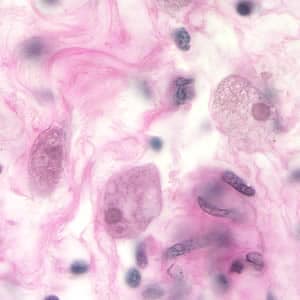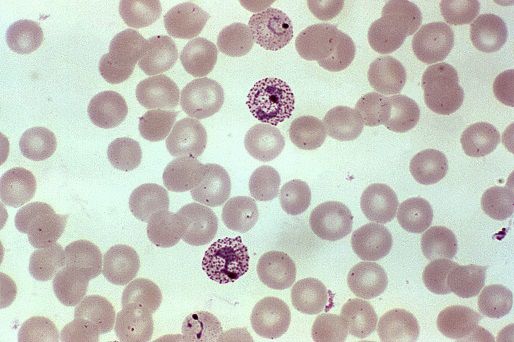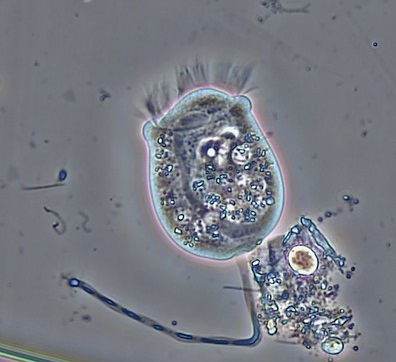An organism is one which lives an independent life.
Single-cell organisms are pretty interesting in that with a single cell; they perform the entire activities.
There are billions of cells in the human body that make up tissues and further organs to function.
In a single-cell organism, the cell is designed to carry out all its life activities.
However, there are a few important modifications that make it sustain so well.
Single-Celled Organisms
Protozoa
These are the eukaryotic cells that live mostly in water. It can be freshwater or marine water but very rarely in soil or land. They are many types of protozoa and some are free-living, while others act as parasites. Some of them even cause severe diseases in humans.
They generally consist of a plasma membrane, nucleus, mitochondria, vesicles, flagella, cilia, and other cell organelles. Though most live free, they get their food from external sources. They eat up bacteria and other organic matter.
Examples include Amoeba, euglena, and paramecium.
Parasites include Entamoeba and Plasmodium.
Bacteria
These are prokaryotic single-celled organisms. They are said to be omnipresent. They are found in water, soil, air, and extreme climates like heat and cold.
Of them, many disease-causing bacteria have been affecting humans for centuries.
These bacteria have the ability to derive energy from multiple sources.
And based on food procurement, they are classified as parasites, saprophytes, autotrophs, and even chemotrophs.
Examples include E-coli, staphylococcus bacteria, salmonella typhi, pseudomonas aerogenosa, etc.
Archaea
These are another set of prokaryotes that significantly differ from bacteria. There are anaerobic organisms which means they live in areas with no oxygen. They are found in harsh climates like hot springs and saltwater. Besides, they are also found in soils and oceans.
Single-celled parasite
A parasite is an organism that survives on another organism and derives nutrition and other requirements for living at the expense of the host.
Hence, the host organism suffers due to the parasite’s attack on it.
There are many types of parasites based on their preferences, modes of transmission, etc.
But those with shape and structure are quite interesting.
Few of the Microorganisms are parasites that have small structures. They can be either single-celled or multi-celled parasites. But in this article, we will see the list of single-celled parasites and their behaviors.
These single-celled parasites are mostly either protozoa or bacteria. They cause diseases in humans, animals, and plants. They are widely present across all parts of the world and can also become epidemic at a time leading to mass infections and deaths.
They can enter humans through food, water, air, and contact. Inside humans and other organisms, they live by feeding the tissues, cells, and other essentials and multiply rapidly, leading to sickness and diseases in the host. If not controlled, they can sometimes lead to the death of the host.
Examples of the single-celled parasite in humans and their features
1. Protozoan single-celled parasite
Protozoans exist as parasites in the human body. Some of them stay for a very long time in the body without being noticed except for minute health issues. Example includes
Entameba histolytica
This a common pathogenic protozoan that relies on the human intestine for a long time. It can also pass on to other body organs like the liver, heart, and even brain. In the intestine, it causes symptoms like pain, mucus, stools, etc.

But if the population is more, the pain can be severe and need medical attention. Since it is an amoeba, it is called a shape-altering single-celled parasite.
Toxoplasma gonodi

This is an interesting protozoan that exists in the blood of man and is transmitted from cats through food and water contamination. It almost shows negligible symptoms in men for a very long time. And it is said to infect half of the human population in the world.
It reproduces in cats and is spread mainly through improperly cooked meat, dairy products, etc.

Malaria is a highly contagious protozoan parasite transmitted to humans by the female Anopheles mosquito (insect).
They are four types of parasites
Plasmodium vivox,
P. falciparum,
P. malaria and
P. ovale.
The symptoms of infection include repeated short-duration fevers, chills, headaches, etc. If the parasite life cycle is not controlled by drug treatment, it leads to death.
In the year 2016, there were 216 million cases of malaria infection worldwide, of which 445,000 people died.
Each year in the United States, there are approximately 1,700 cases diagnosed with malaria, especially among tourists.
Cryptosporidium is another protozoan that infects animals and humans. It is mainly transmitted by water. It causes diarrhea as it lives in the intestine.
Giardia is a ciliated protozoan parasite that causes giardiasis. It is spread by contaminated drinking water.
Leishmaniasis is a flagellate protozoan parasitic spread by the bite of a sandfly. The common symptoms are which causes skin sores, mucous ulcers in the nose, and mouth, fever, anemia, and liver, spleen, and bone marrow damage.
Balantidium coli is a ciliated protozoan parasite. It infects the intestines of humans.
It is transmitted through contaminated food and water. Symptoms include abdominal pain and diarrhea
2. Bacteria parasites
A parasite stays in the host body and cannot live on its own without a host. But, most bacteria can be grown in lab cultures out of the host. So they are not classified as parasites but as pathogens. However, few bacteria are not grown in lab cultures, making them classified as a parasite.
Mycobacterium leprae: This is a dreaded bacteria, as per the world health organization, and it has threatened the future existence of mankind in the past. This is a bacteria that can quickly spread from one infected person to another just by air through salivary droplets.
These bacteria, once entered into the human will stay in the body for a lifetime.
However, it is discovered that these bacteria have lost the capacity to be grown in lab cultures. This is because their metabolic system is completely changed to just survive in the host.


If these single-cell organisms are considered life, why are babies considered the last lifeless clumps of cells?
You’re trying to start an abortion debate on studyread.com?
Please understand most abortions occur within the first trimester where the fetus cannot live on its own. These single-cell organisms can.
James asked a pertinent question. You argued his point with biological nonsense. Those single celled organism cannot sustain themselves if they are cut off from their natural evolution of growth. I highly advise you to take a biology course on human development. Some adults can’t live on their own.
Yeah!!
It seems the earth is full of living organisms so there is no empty space.
Ie there is no void, vacuous spaces
or total emptiness on earth.
@Berit, you are correct.
Vacuums exist. Space is nearly a perfect vacuum: empty space which objects can move through without friction.